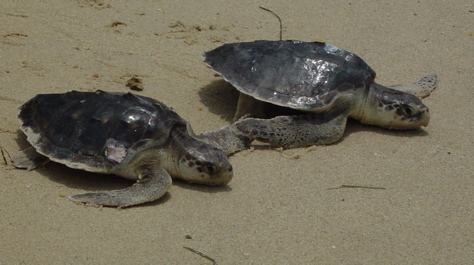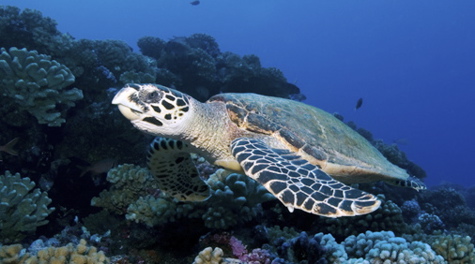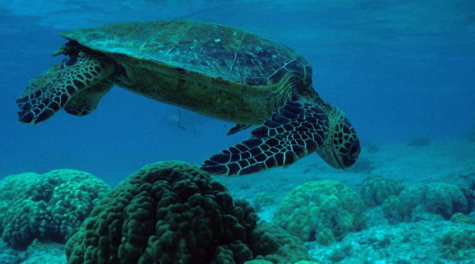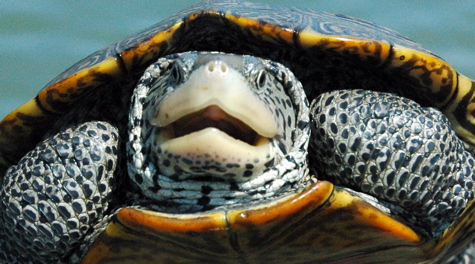Sea Turtle Stranding Program
The Virginia Institute of Marine Science (VIMS) served as the Commonwealth's center for the monitoring, study, and conservation of sea turtles within Virginia's waters from 1979 until the retirement of Dr. Jack Musick in 2009. Stranded sea turtles should now be reported to the Virginia Aquarium's Stranding Program Rehabilitation Center.
LEGACY CONTENT
The VIMS Sea Turtle Stranding Program, established in 1979 by Dr. J. A. Musick , responds to scores of strandings in Chesapeake Bay each spring. Program staff bring live stranded sea turtles to VIMS, where the turtles are tagged and released. Turtles that require rehabilitation due to injury or disease are transported to the Virginia Aquarium's Stranding Program Rehabilitation Center in Virginia Beach.
In addition to its stranding work, the VIMS program also monitors population trends of sea turtles in Chesapeake Bay and surrounding waters. The Chesapeake Bay is a major summer foraging ground for juvenile loggerhead and Kemp's ridley sea turtles. The Bay is unique within the U.S. because its population of juvenile turtles allows researchers to assess the impact of national conservation efforts. Sea turtles are long-lived animals that may not reach sexual maturity until 20 years of age. The Bay provides the first opportunity to evaluate the success of regulations such as trawling limitations, use of sea-turtle exclusion devices by commercial fisheries, and conservation efforts on nesting beaches. Population increases due to conservation programs, or population decreases due to human impact, may be detected first within Virginia's juvenile sea-turtle population.
Stranding Facts
- 250 to 350 sea turtles strand within Virginia's waters each year—mostly juvenile loggerheads and Kemp's ridleys
- Stranding activity peaks in May and June, with a smaller peak in October when the turtles leave the Bay to travel south
- During the peak stranding period, VIMS receives 4 to 11 calls a day from homeowners, the Coast Guard, local fishermen, the Virginia Game Warden, and local state parks and industries
- Cause of death can only be determined in a small fraction of the strandings found
- Causes of death have included drowning due to entanglement; boat-strike injuries; cold stunning; illness; ingestion of fishing hooks, plastics, or fishing gear; and natural causes
Threatened and Endangered
All 7 sea turtle species are protected under the Endangered Species Act. The Kemp's ridley is the most endangered sea turtle and one of the most endangered animals in the world. ONLY VIMS and state cooperatives are federally authorized to handle these endangered/threatened animals. Visit our FAQ pages to learn what you should do if you encounter a stranded sea turtle.






